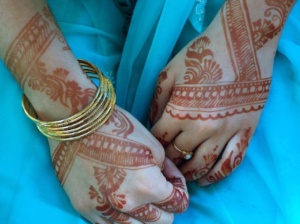by Sam Muir
The etymology of a “tattoo” is derived from its Polynesian roots “tatau” meaning “correct” and later “irezumi” meaning “insertion of ink” in Japanese (PBS, 2003). With significant coverage myself, I follow the industry closely and am more than familiar with the subjective controversies surrounding the art.
Popular among the media and various news sources, the ridicule of a tattooed person is never far away. The derogatory outlook on tattoos are often associated with outlaws and criminals. Take for instance Russian prison tattoos which often became regulatory and uniform to forge some degree of hierarchy among inmates (Guardian, 2014) it is difficult to comprehend the stereotypes that Western countries convey, indicating we are not as sophisticated and equality-driven as we like to portray as a nation.
 In 2015 the Daily Telegraph published an article entitled “Ugly and utterly pointless: Tattoos prove that the human race is going backwards.” (Daily Telegraph, 2015) The article is biased in its entirety and written from a time-locked and completely subjective view. The journalist focuses on poorly executed tattoos or art with spelling mistakes, which artists and clients alike know is a rarity in the industry. He refuses to acknowledge that the widely accepted art form has developed in more recent years, accompanied by advances in: equipment available, artists’ talents and higher quality inks. Similarly, the writer subliminally generalizes tattooed people as “intoxicated at the time”, which is completely void of any reasonable justification as it merely relates to the minority. Rewind a year, and The Daily Mail, another of Britain’s leading papers published an article outlining a study which supposedly showed higher traits of anger in tattooed individuals. The study immediately becomes discredited due to the fact i) the Daily Mail does not cite and reference any sources, and ii) that regardless of the existence of the study it only studied 97 people and so the study itself has no practical applications or validity in relation to the global population (Daily Mail, 2014).
In 2015 the Daily Telegraph published an article entitled “Ugly and utterly pointless: Tattoos prove that the human race is going backwards.” (Daily Telegraph, 2015) The article is biased in its entirety and written from a time-locked and completely subjective view. The journalist focuses on poorly executed tattoos or art with spelling mistakes, which artists and clients alike know is a rarity in the industry. He refuses to acknowledge that the widely accepted art form has developed in more recent years, accompanied by advances in: equipment available, artists’ talents and higher quality inks. Similarly, the writer subliminally generalizes tattooed people as “intoxicated at the time”, which is completely void of any reasonable justification as it merely relates to the minority. Rewind a year, and The Daily Mail, another of Britain’s leading papers published an article outlining a study which supposedly showed higher traits of anger in tattooed individuals. The study immediately becomes discredited due to the fact i) the Daily Mail does not cite and reference any sources, and ii) that regardless of the existence of the study it only studied 97 people and so the study itself has no practical applications or validity in relation to the global population (Daily Mail, 2014).
What these subjective articles deny is that tattoos are a form of self expression to the individual. They help display the individuality of a person without necessarily offending others’ beliefs vocally. If executed well a tattoo builds on the foundation of a persons characteristics and makes them apparent in a more artistic nature. Not only this but commonly forgotten are the medical benefits of tattoos. In the instance of severe alopecia an individual can have said hair that was lost replaced by a talented tattoo artist with the end result having high levels of realism. Furthermore patients, particularly those who donate blood or diabetics can have their “condition” tattooed on a visible body part to aid the efficiency of emergency services (Kluger, 2013).
 In addition to this a study (Swami, 2016) was conducted in 2016 and investigated the hypothesis that tattooed individuals are more willing to engage in risks. Researchers studied 551 women and 455 men (a far larger sample) using a 7 point scale to represent a degree of willingness to certain scenarios. The study was undertaken using a parallel-blind technique. The results clearly showed that the non tattooed individuals were far more prone to take financial risks. Undoubtedly this is an undesirable trait to posses and thus indicates the higher rationality of tattooed individuals, reinforced by the results showing tattooed individuals also having higher external stimulation.
In addition to this a study (Swami, 2016) was conducted in 2016 and investigated the hypothesis that tattooed individuals are more willing to engage in risks. Researchers studied 551 women and 455 men (a far larger sample) using a 7 point scale to represent a degree of willingness to certain scenarios. The study was undertaken using a parallel-blind technique. The results clearly showed that the non tattooed individuals were far more prone to take financial risks. Undoubtedly this is an undesirable trait to posses and thus indicates the higher rationality of tattooed individuals, reinforced by the results showing tattooed individuals also having higher external stimulation.
To conclude this article the negativity that surrounds tattoos is purely based on subjective perspectives and uneducated stereotypes and with the advancement of techniques the number of tattooed individuals grows exponentially, as do the potential benefits of tattoos. The media attempts to belittle those with artwork but when studying something that affects a large population it is important to withhold subjectivity and remain open-minded.
